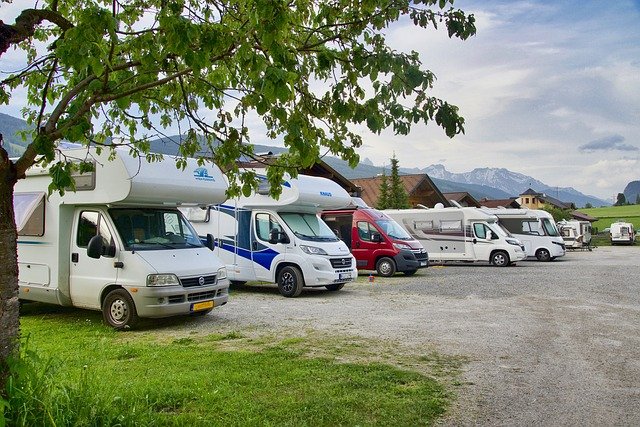Tornado Shelter: A Strong Fortress Protecting Life
Tornadoes remain among the most destructive natural disasters in the United States, capable of devastating entire communities within minutes. A tornado shelter provides a critical line of defense, offering a reinforced space designed to withstand extreme winds and flying debris. Understanding your options, from above-ground safe rooms to underground bunkers, empowers you to make informed decisions that could save lives during severe weather events.

When severe weather strikes, having a designated tornado shelter can mean the difference between safety and catastrophe. These specialized structures are engineered to meet rigorous standards, providing protection when conventional rooms simply cannot. Whether you live in Tornado Alley or an area with occasional severe storms, investing in a proper shelter offers peace of mind and tangible protection for your family.
Understand the Different Types of Shelters and Their Characteristics
Tornado shelters come in several distinct forms, each with unique features suited to different properties and budgets. Above-ground safe rooms are reinforced steel or concrete structures installed inside existing homes or garages. They offer convenient access and eliminate concerns about flooding or claustrophobia that some people associate with underground options. These rooms typically feature anchored walls, reinforced doors, and ventilation systems designed to maintain breathable air during extended stays.
Underground shelters, including in-ground bunkers and cellar-style units, provide excellent protection by utilizing the earth itself as a shield against debris and wind forces. These shelters are often constructed from corrugated steel, reinforced concrete, or fiberglass and can be installed beneath garages, yards, or basements. Community shelters represent another option, particularly in areas where individual installation is impractical. These larger facilities serve multiple families or neighborhoods and must meet strict accessibility and capacity requirements.
Each shelter type must comply with Federal Emergency Management Agency guidelines and ICC 500 standards, which specify wind resistance ratings, impact protection, and structural integrity requirements. The right choice depends on your property layout, soil conditions, budget, and personal preferences regarding accessibility and comfort.
Advantages of Building a Shelter
Installing a tornado shelter delivers benefits that extend beyond immediate storm protection. The most obvious advantage is life safety—these structures are specifically designed to withstand EF5 tornado winds exceeding 200 miles per hour and protect occupants from flying debris that causes most tornado-related injuries and fatalities. During a tornado warning, having a designated shelter eliminates the panic and uncertainty of finding adequate protection.
Beyond safety, tornado shelters can increase property value, particularly in regions with frequent severe weather. Prospective homebuyers in tornado-prone areas often prioritize properties with existing shelters, viewing them as essential safety features rather than luxury additions. Some insurance companies offer premium discounts for homes equipped with certified storm shelters, recognizing the reduced risk of catastrophic loss.
Psychological benefits should not be overlooked. Knowing you have a reliable refuge during severe weather reduces anxiety for many families, especially those who have experienced tornadoes firsthand. Children and adults alike benefit from the confidence that comes with preparedness. Additionally, shelters can serve dual purposes, functioning as secure storage spaces for valuables, important documents, or emergency supplies when not needed for weather protection.
Installation and Site Selection Guidelines
Proper installation begins with careful site selection, which significantly impacts both shelter effectiveness and long-term usability. For underground shelters, soil composition and drainage are critical considerations. Areas with high water tables or poor drainage may experience flooding, making above-ground options more suitable. A professional site assessment can identify potential issues before installation begins.
Above-ground shelters require solid foundations capable of supporting the structure and resisting uplift forces during extreme winds. Many homeowners choose to install these units in garages or interior rooms on the ground floor, where they integrate seamlessly with existing spaces. Underground installations typically involve excavation, proper drainage systems, and secure entry points that remain accessible but protected from debris.
Accessibility is paramount—your shelter should be reachable within minutes from any part of your home. Consider the needs of elderly family members, young children, or individuals with mobility challenges when planning entry points and interior space. Ventilation systems must be installed according to manufacturer specifications to ensure adequate air circulation during occupancy. Professional installation by certified contractors ensures compliance with local building codes and manufacturer warranties.
Routine Maintenance and Emergency Preparedness
A tornado shelter requires regular maintenance to remain functional when you need it most. Inspect door seals, hinges, and locking mechanisms at least twice yearly, checking for rust, damage, or obstruction. Underground shelters need particular attention to drainage systems and sump pumps if installed. Clear debris from entry points and verify that ventilation openings remain unobstructed.
Stock your shelter with emergency supplies including water, non-perishable food, first aid kits, flashlights, batteries, and a battery-powered weather radio. Replace expired items annually and ensure everyone in your household knows where supplies are stored. Keep a list of emergency contacts, important documents in waterproof containers, and any necessary medications inside the shelter.
Conduct regular family drills to ensure everyone knows how to access the shelter quickly and what to bring during an actual emergency. Practice these drills at different times and under various conditions so the routine becomes second nature. Review and update your emergency plan annually, accounting for changes in family composition or household needs.
Cost Choices for Tornado Shelters
Investing in a tornado shelter involves various cost factors depending on shelter type, size, materials, and installation complexity. Understanding typical price ranges helps you budget appropriately and compare options effectively.
| Shelter Type | Size/Capacity | Cost Estimation |
|---|---|---|
| Above-Ground Safe Room (Steel) | 4-6 people | $3,000 - $7,000 |
| Above-Ground Safe Room (Concrete) | 6-8 people | $5,000 - $10,000 |
| Underground Shelter (Steel) | 4-6 people | $3,500 - $9,000 |
| Underground Bunker (Concrete) | 8-12 people | $10,000 - $20,000 |
| Garage Installation (Above-Ground) | 6-8 people | $4,500 - $12,000 |
Prices, rates, or cost estimates mentioned in this article are based on the latest available information but may change over time. Independent research is advised before making financial decisions.
Installation costs vary significantly based on site preparation requirements, local labor rates, and accessibility challenges. Underground shelters in areas with rocky soil or high water tables may require additional excavation and drainage work, increasing total costs. Some states and localities offer rebate programs or tax incentives for tornado shelter installation, potentially offsetting a portion of your investment. The Federal Emergency Management Agency has historically provided grant programs in eligible communities, though availability varies by region and disaster history.
When evaluating costs, consider long-term value rather than initial price alone. A properly installed, certified shelter provides decades of protection and requires minimal ongoing maintenance. Financing options through home improvement loans or manufacturer payment plans can make shelters more accessible for families on tighter budgets.
Ensuring Your Family’s Safety
Tornado shelters represent a practical investment in your family’s safety and your property’s resilience. By understanding the different shelter types, recognizing the advantages they offer, following proper installation guidelines, maintaining your shelter diligently, and making informed cost decisions, you create a comprehensive safety strategy for severe weather events. While no one can predict when a tornado will strike, having a certified shelter ensures you are prepared to protect what matters most when warnings sound and storms approach.




